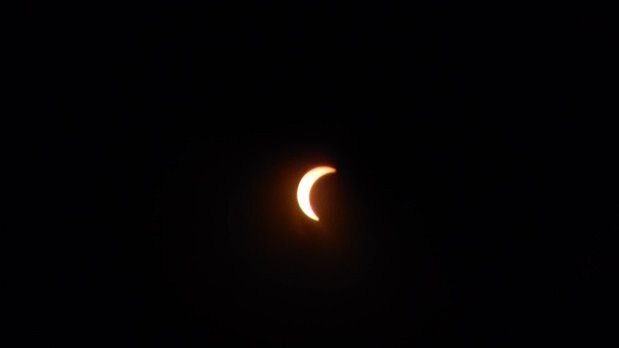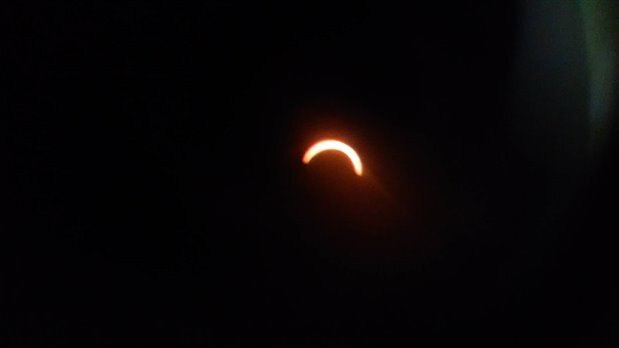The solar corona at the March 2015 total eclipse over Svalbard. Photo: Judy Anderson. Processing: Alson Wong.
Warning! Even if 99% of the sun is covered by the moon, the remaining 1% crescent is dangerous to view with the naked eye and can cause serious eye damage or blindness. For information on safely veiwing and photographing an eclipse, please refer to the following links.
https://eclipse.gsfc.nasa.gov/SEhelp/eclipsePhoto.html
How to Photograph a Solar Eclipse from Nikon
How to Photograph Total Solar Eclipse 2017 - How to Take Pictures of the Sun
How can I photograph a total solar eclipse?
You will need to purchase a solar filter that will reduce the brightness of the sun so that the light intensity does not destroy your camera. If you ONLY take a photo at the moment of totality, you will not need this filter, and will be rewarded by being able to photograph the faint corona, which will not be visible if you have the filter in place. Most digital cameras with telephoto lenses of 100 mm or larger will show a disk for the eclipse that will show some detail. As a trial, photograph the full moon at night. It will be the same diameter as the total eclipse, so you can practice on the moon first to get the right telephoto lens combination. There are many places on the internet where you can get detailed information such as Mr. Eclipse http://www.mreclipse.com/SEphoto/SEphoto.html
The following links contain information with regards to the Solar Eclipse of 2017. There are many resources such as high resolution maps, Tracking Software Apps for Smartphones, 2D/3D Printable Pinhole Projectors, veiwing safety tips and much more available from https://www.nasa.gov/ .
https://eclipse.gsfc.nasa.gov/SEgoogle/SEgoogle2001/SE2017Aug21Tgoogle.html
https://eclipse2017.nasa.gov/eclipse-maps
https://eclipse2017.nasa.gov/apps
https://eclipse2017.nasa.gov/downloadables
https://eclipse2017.nasa.gov/eclipse-live-stream
https://eclipse2017.nasa.gov/event-locations
https://eclipse2017.nasa.gov/eclipse-misconceptions
https://eclipse2017.nasa.gov/2d3d-printable-pinhole-projectors
https://eclipse2017.nasa.gov/eclipse-art-projects
https://eclipse2017.nasa.gov/eclipse-viewing
https://eclipse2017.nasa.gov/noaa%E2%80%99s-resources
https://eyes.jpl.nasa.gov/eyes-on-eclipse-web-detail.html
https://eclipse2017.nasa.gov/sites/default/files/interactive_map/index.html
https://svs.gsfc.nasa.gov/4518#
My Photos of the 2017 Solar Eclipse
These images were photographed with binoculars, solar filter film removed from disposable solar eclipse viewing glasses, and an android smartphone.
I originally constructed an adapter with the solar filter for the Raspberry Pi Camera but it failed a few hours beforehand. I did use a Pi 3 with display to watch the live stream provided by NASA. At one point the ISS passed in front of the Sun and was visible with binoculars for a brief moment. I was lucky enough to witness this but unfortunately was unable to capture an image of this rare occurrence. I apologize for the quality of the images, my equipment was improvised.
This was one of the best of many images. Afterwards I lost the proper alignment between the binoculars and camera lense.
Thanks for viewing this post.





















Top Comments